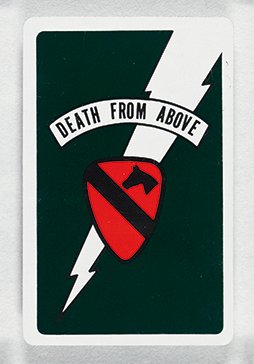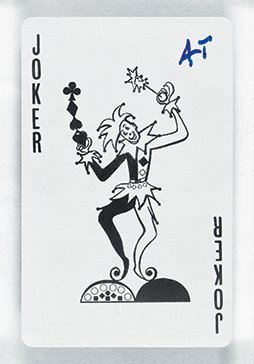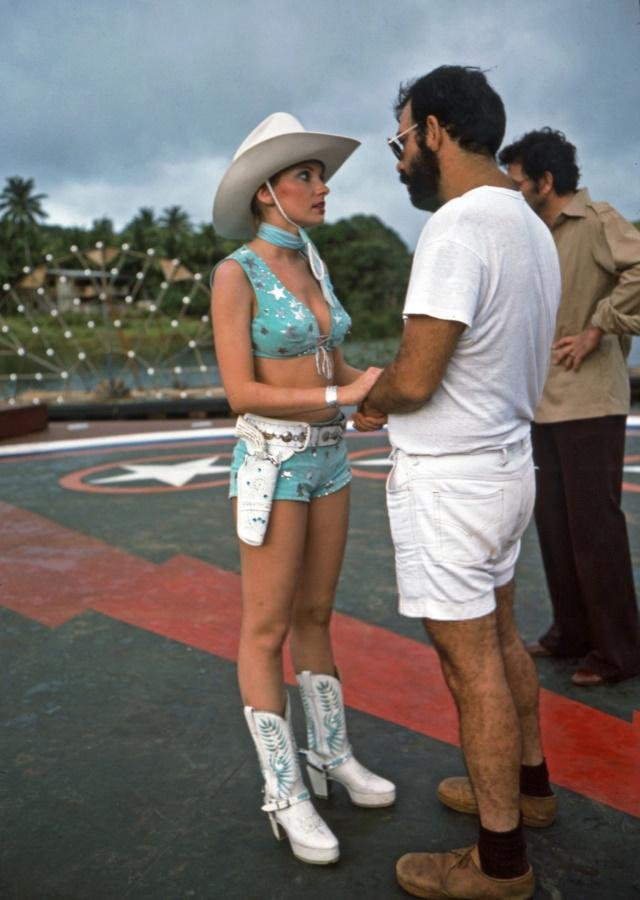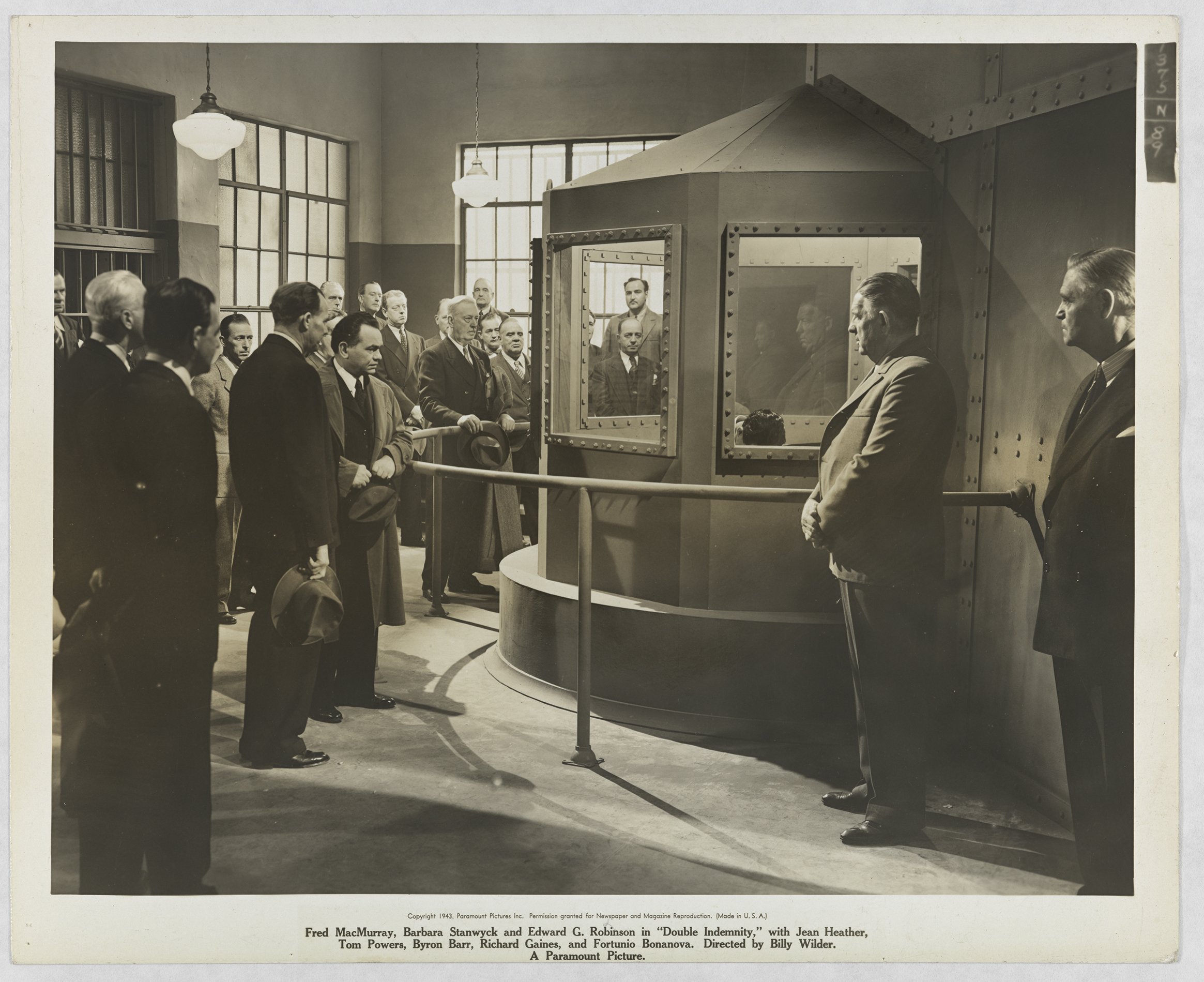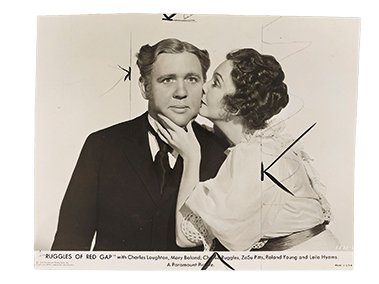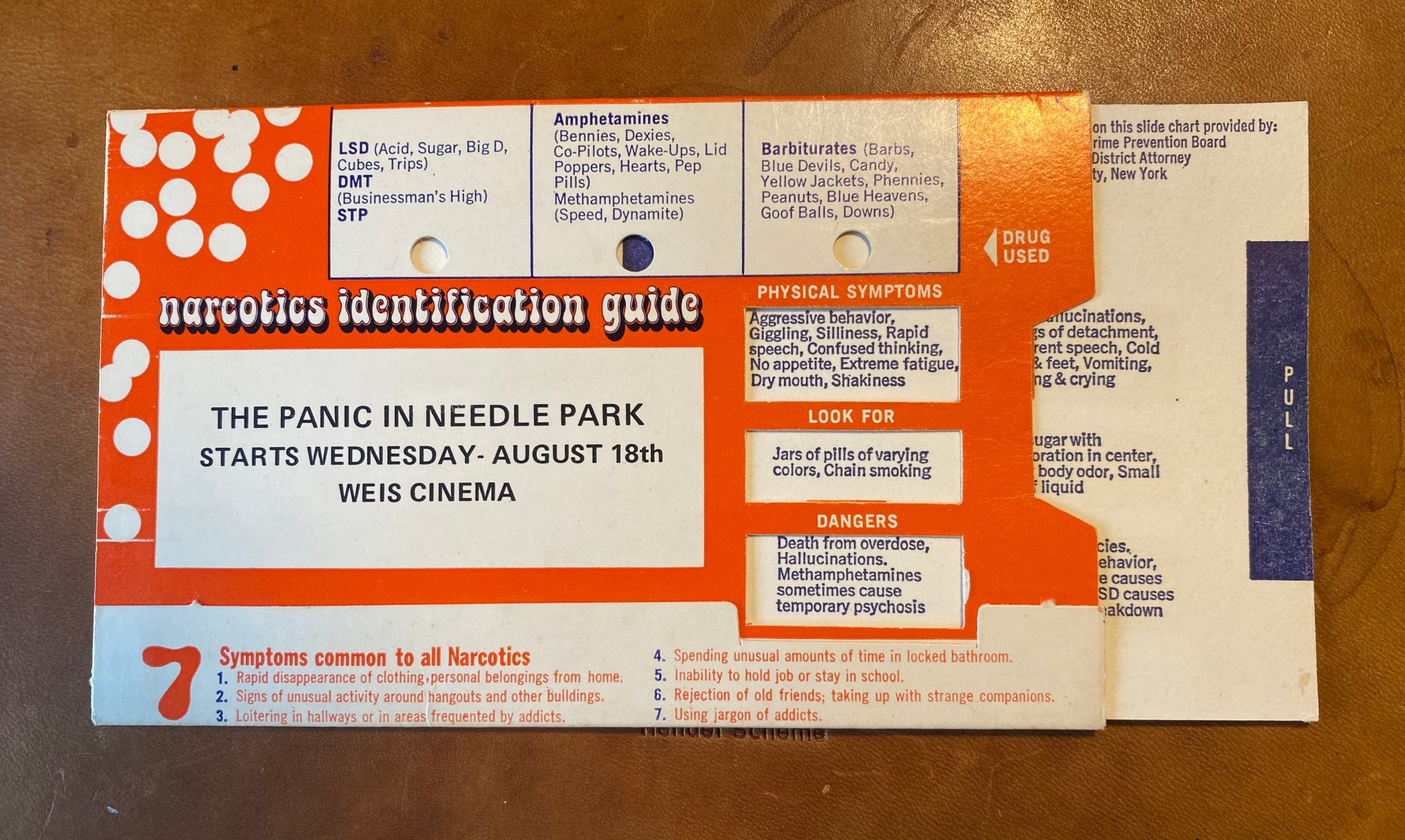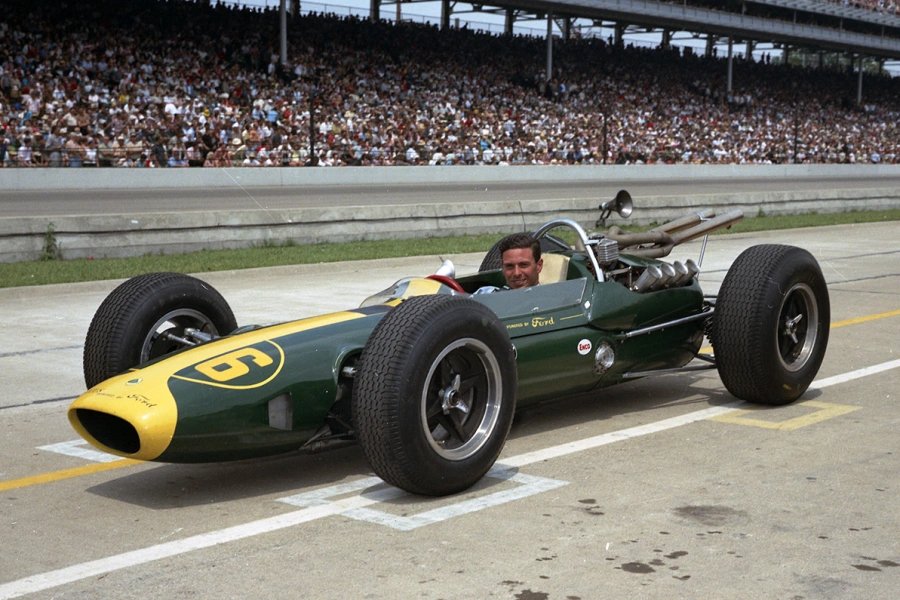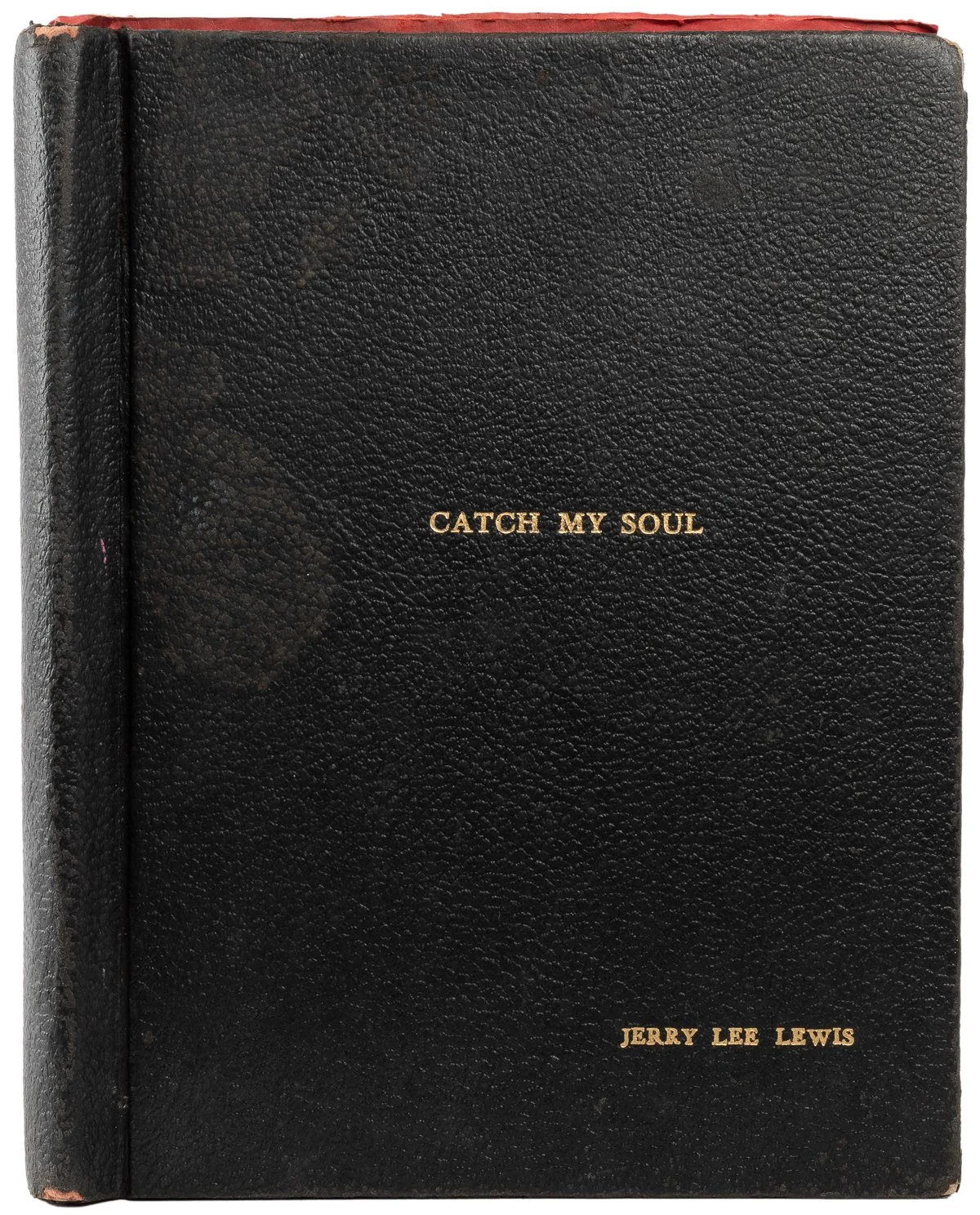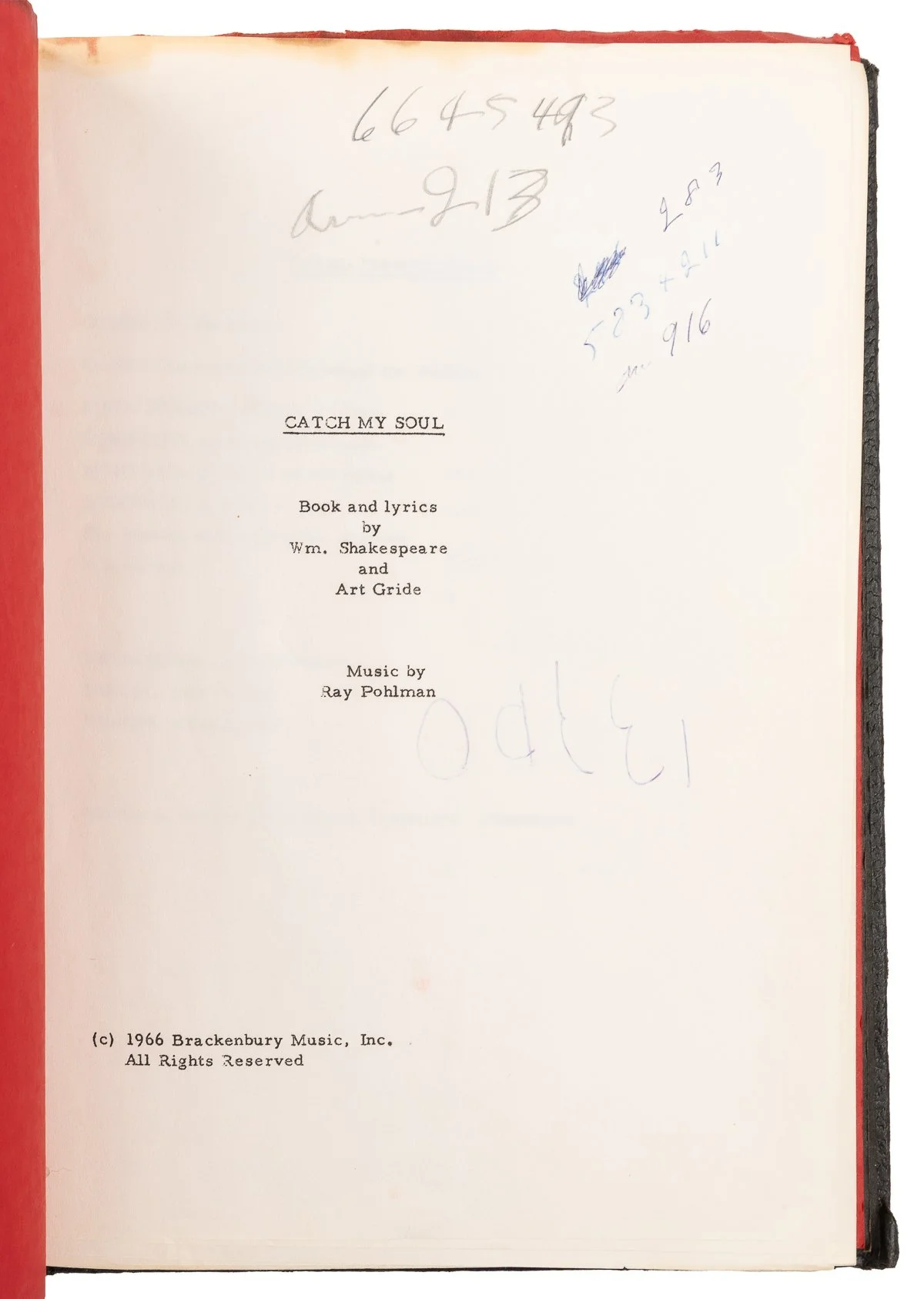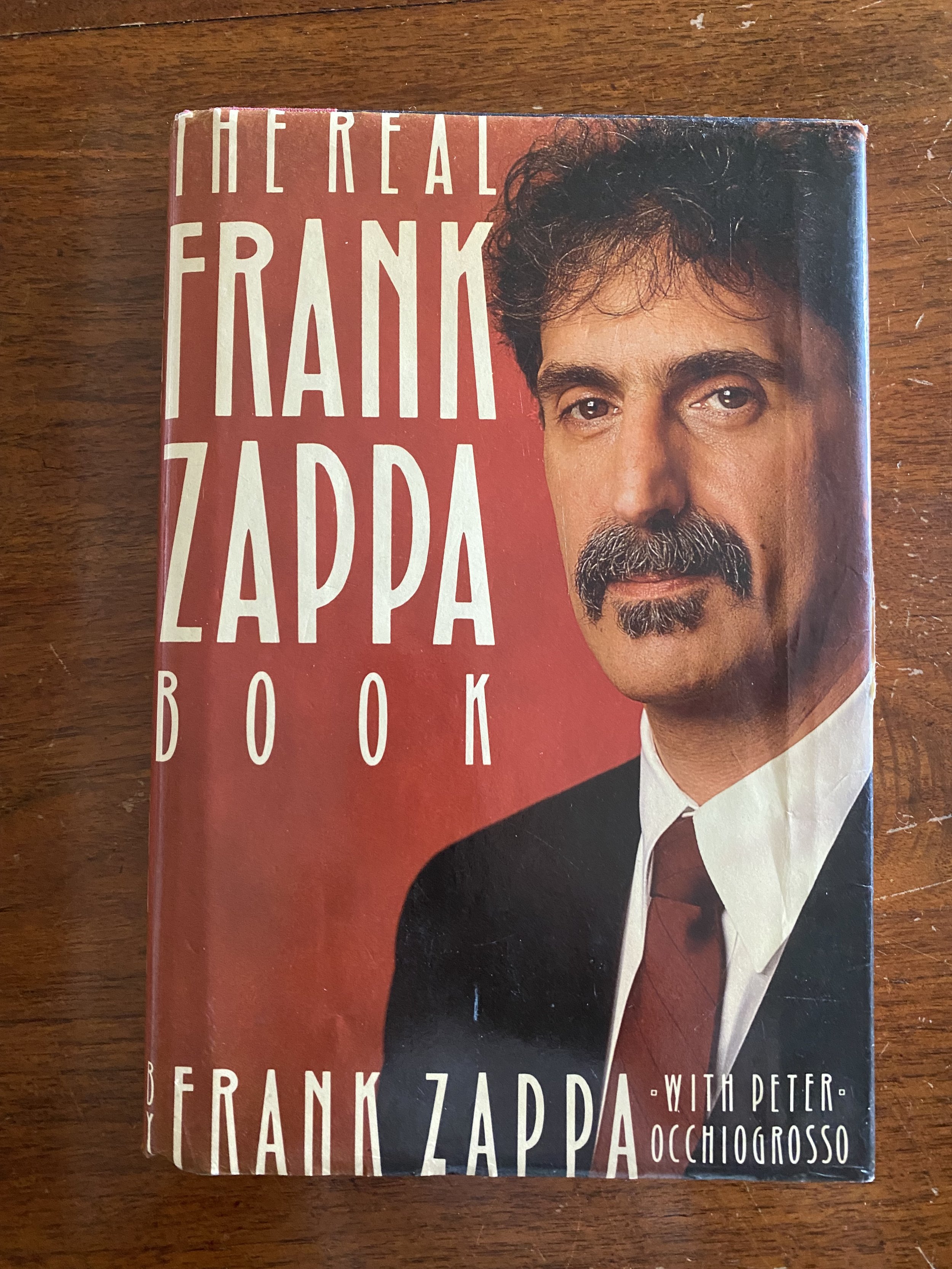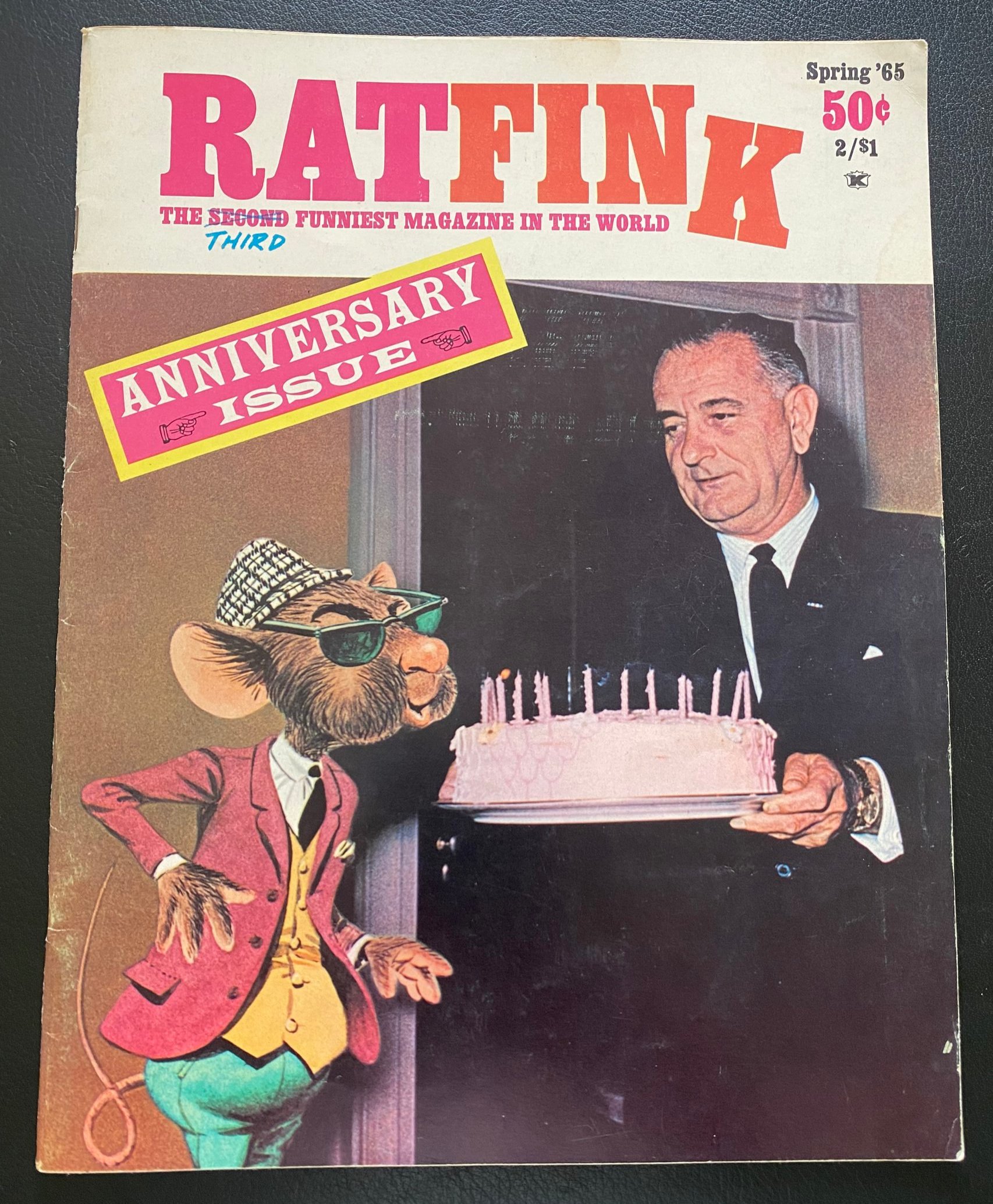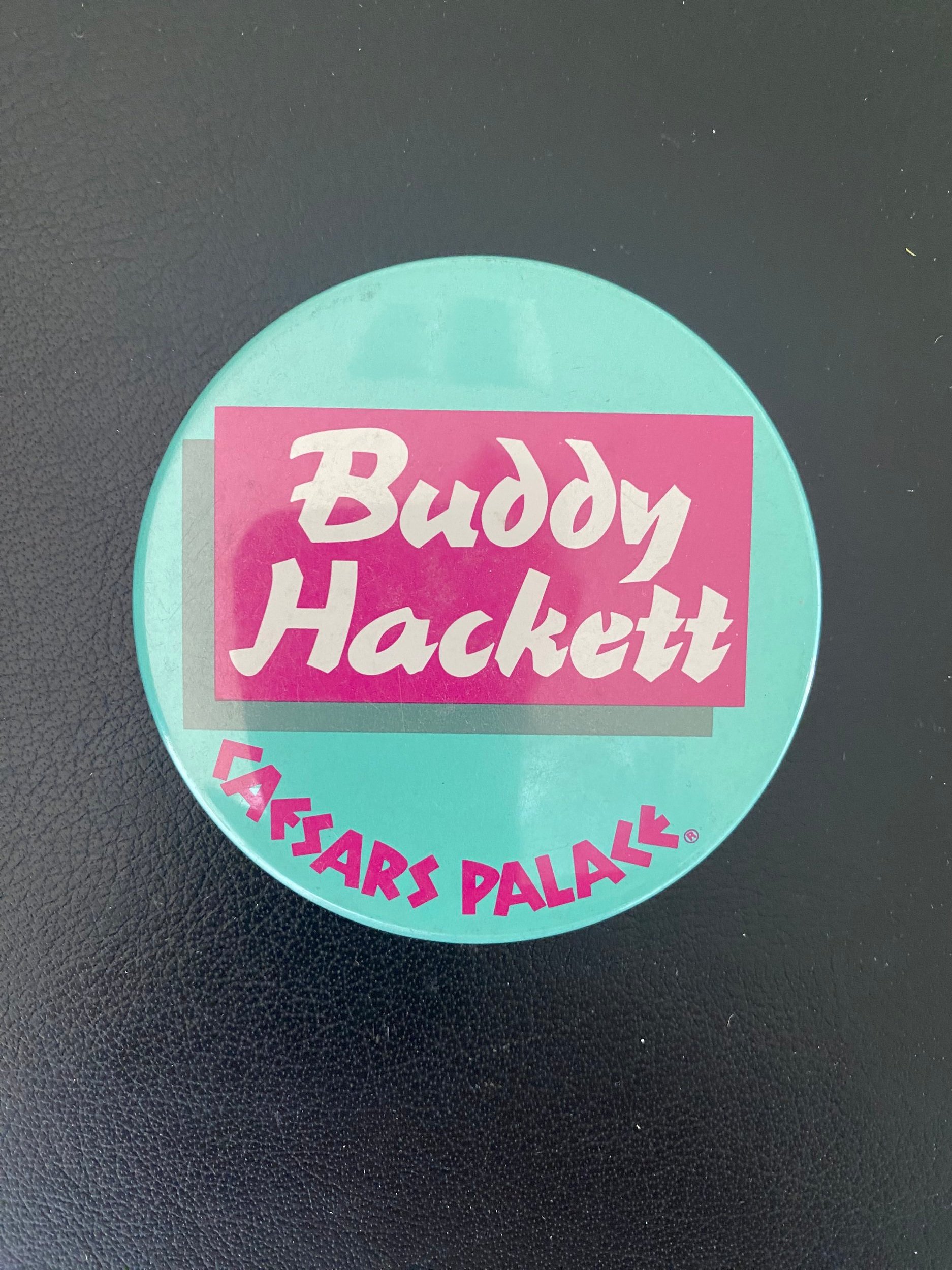Not art. Just stuff.
McQueen
Printers' plates for newspaper ads for Bullitt and LeMans
Collage by Richard Prince on Bridge T-shirt
Steve's bound copy of Junior Bonner
Movies
John Ford's deskplate
from World War II
Provenance: Burt Reynolds Collection
Promotional pizza box for The Safdies’ Good Time
The Duke of Death
prop dime novel from Unforgiven
Little Bill Daggett (Gene Hackman) pronounces the title "The Duck of Death" while giving the incarcerated English Bob (Richard Harris) -- the novel's subject -- shit about its wildly exaggerated narrative.
Production memento
The King of Comedy
Gifted to Jerry Lewis by Robert de Niro
Prop ‘Death From Above’ Air Cav Playing Card from Apocalypse Now, with my draft card
Provenance: Dean Tavoularis, the film's production designer
Production design sketches for the Bunny costumes in Apocalypse Now
Provenance: Jerry Lewis office
Raymond Chandler's copy of his screenplay from the James M. Cain novel, and a still of the alternate ending where Fred MacMurray goes to the gas chamber instead of dying in Edward G. Robinson's arms. The execution scene was deemed too much for the moviegoing public.
Statuette of Kim Jong Il from Team America: World Police
Title Cards
As a company called Pacific Title has slowly liquidated its inventory at various Entertainment Memorabilia auctions, title cards have become a collecting thing. Back in the day, credits were rolled over static backdrops that were hand painted. I bought two from The Searchers at auction: the one which was shot behind the credit “Directed by John Ford” and another which ran with “Natalie Wood / Ward Bond.” The one for John Wayne went for the biggest money of the lot. I missed that one but Ford was the one I really wanted anyway, and Natalie/Ward was just a bonus pickup. What struck me was that they painted different adobe brick walls for each credit. Who would have even noticed if they had used the same one?
3 press-used photos of Charles Laughton from Ruggles of Red Gap, and one from "real life" with Elsa Lanchester and Carmen Miranda
Hitchcock
Pressbook for Notorious with that key
Production design sketch of Bates Motel sign for Psycho
Promotional bust of Alfred Hitchcock
Altered States
Narcotics Identification Guide (promotional item for The Panic in Needle Park)
Chinese opium pillows acquired in Chiangmai
Signed by the author, who synthesized and first ingested LSD
Reading material for your dentist's waiting room
I got the card but never carried it.
Promotional brochure for quaaludes.
Eulogy for Timothy Leary by Hunter S. Thompson
from an edition of 326, 300 numbered and 26 lettered. This is Copy "J"
Six pins with the same message
From Encino Man: "Link's from Estonia."
A room I would have liked to be in.
This is your mind on drugs…
Someone pencilled in this quote from A.G. (presumably Alan Ginsberg) in 1954:
"Given that there is an agreement between the FBI and the MAFIA to keep up the price of narcotics..."
Just in case you were not convinced by the rantings of Lamantia and Artaud...
A timely bootleg broadside taken from Zap 3
(September, 1968) where it first appeared in plain old black and white. Gotta love the subtle and skillful colorization.
Lit and Graphic Arts
S. Clay Wilson
S. Clay Wilson was R. Crumb's evil twin. Crumb gave us Mr. Natural, Wilson's creation was the Checkered Demon, who toggled between biker gangs and pirate bands (who can forget Captain Pissgums?). Sonny Barger was the founder of the Oakland chapter of the Hell's Angels in 1957 who went on to corporatize the organization. I have no idea who Nelson is (or was) except that he merited a Checkered Demon from Wilson.
Jim Thompson's TWA "Getaway" Card and first paperback edition of The Getaway
Association copy of Viva’s Superstar
Any guesses who Leonard is? Leonard Cohen? Leonard Bernstein? Jackie Leonard?
Day of the Locust
West’s Bible
West’s Bible is one of those too-good-to-be-true items – and maybe it is. The Bible is real, I’m just not sure that West himself placed the leaf where it resides. The cover is monogrammed “N. W. West” (West, né Nathan Weinstein, called himself “Nathan von Wallerstein West,” making him, in my grandmother’s parlance, a Jew afraid to smell from herring.) It came from West’s brother-in-law, S.J. Perelman. But the presence of a dried leaf marking Exodus 9-10 which describes the plague of locusts – anyone could have slipped that in along the way. Gilding the lily. “Salting” a Bible like one does a gold mine. But maybe not…
Hunter S. Thompson scribbles a note to himself for an idea for a 400 word story on a Vegas drinks card. It would morph into...
Fear and Loathing in Las Vegas
Cars
Stickpin commemorating Jim Clark's 1965 Indianapolis win in a Ford-powered Lotus
Gifted by Colin Chapman to Clark
Von Dutch's shop sign
Note his suggestion to pinstripe your antiques.
Porcelainized sign for Plymouth dealer on Route 66 (the Mother Road)
c. 1970
The other French guy named Dreyfus
Rene Dreyfus (1905-1993) was a French racing driver who drove for Bugatti, Maserati, and Scuderia Ferrari before the war. After serving with distinction in the U.S. Armed Forces (he was in America racing when war broke out), he opened the restaurant Chanteclair and, though he did not race postwar, was the doyen of the East Coast racing scene.
He is best remembered for his victory over the all- conquering German “Silver Arrows” cars, underwritten by Hitler, at the Grand Prix of Pau in April 1938. Someone named Dreyfus beating the Nazis in a clearly inferior French car was a “score-one-for-the-Jews” moment.
It was also a formative memory for a young French boy named Eugene Nogue Sans, who would grow up to become a senior security official in France, what they call un haut functionnaire. Eugene was not quite nine years old when he saw Dreyfus whup the Bosch, and carried that memory with him through his wartime adolescence. He told me all this when he learned that I was a collector of prewar race cars, because he also happened to be the father-in-law of a friend of mine. For him, Dreyfus was a Resistance hero avant la lettre.
As it happens, I owned a Bugatti T-59 that Rene had raced at Monaco and elsewhere. We were acquaintances, the way I’m acquainted with some of the artists whose work I own. He even drove the car on occasion at Bridgehampton. I did not tell Eugene I knew Rene. Instead, I arranged for both of them to come to lunch at my house one day. I told Rene what I was up to, but preserved the element of surprise for Eugene, to whom I simply introduced this unassuming old man as M. Dreyfus, in the formal way one does among the French. Of course it is very gauche to ask someone in a French social setting anything so forward as what he does for a living. Rene probably would have described himself as a retired restaurateur anyway. I sat through the lunch like the cat who ate the canary, waiting for Eugene to figure out who was sitting opposite him. When it dawned on him who his lunch partner was, this tough cop started blubbering and crying. Likewise, it had been a long while since Rene had run into anyone who had been at Pau that glorious day. I thought they were going to start singing La Marseillaise at any moment, but that only happens in the movies.
Early caricature of Rene inscribed by him to me
Lex Vieux du Volant was originally a club of retired race drivers and old car enthusiasts dating back to before vintage race cars became negotiable securities. This porcelainized metal sign would have hung on a "Maison recommendée," (an inn or restaurant we like) but I couldn't tell you how a "maison" got itself "recommendée."
Cool sign, though, which always makes me think of Rene.
Publicity photo for Bridge stalwarts,
the Smothers Brothers Racing Team
Joanne Carson (Johnny Carson's second ex-wife)
was an avid amateur racer. She was a close friend of Truman Capote, who died in her home.
Grille badge for a club I'd like to join
Harry Miller
Harry A Miller was one of the greatest automotive designers of the twentieth century, kicking the Deusenberg brothers' ass on American board tracks and ovals in the twenties.
When the Indy formula changed with the Depression to make race cars look more like cars the public could buy, ace driver Leon Duray -- a/k/a The Black Prince (I kid you not) -- took two obsolete Miller Front Drive 91's, which had raced as the Packard Cable Specials, to Europe to see what kind of action he could drum up. At Monza, he broke the lap record during warmups, then blew the gearboxes (the cars were "roundy-rounders," not meant to turn except in a circle). The minds of the Europeans were also blown, as cars with three times the displacement could not keep up with the Prince's 1500 cc supercharged missiles. Ettore Bugatti in particular was intrigued, and he offered Duray two T-43 Bugattis -- the ne plus ultra of European luxury sports racing cars -- in exchange for the little 91s. Duray quickly accepted and decamped to Los Angeles. Each party thought they had gotten the better of the other, which in a certain sense is true. Duray pulled way more cash out of the deal than he could have by dumping two broken and obsolete race cars on the market, and Bugatti got donor cadavers from which he copied many important features in his race cars from the T-35 to the T-51 and, ultimately, the T-59. The "appropriation" of ideas was so strong that you could have put the Miller twin cam head directly on a Bugatti T 51 block! Automotive historian Griff Borgeson bought the two cars when he found them sitting derelict at the Bugatti factory in the late fifties. He donated one to the Indianapolis Speedway Museum and sold the other to Bill Harrah for his Vegas car museum. When Harrah's got bought by the Holiday Inn, the 91 went on the block and I bought it. After Chris Leydon got it running, I campaigned it for a while (including at the Monterey Historics, where I was invited by Monterey Historics founder Steve Earle to organize a "Miller Year" in 1993), I donated it to the Smithsonian, where it was once voted the single most popular car in its collection. When I restored it I also put back the original yellow and purple color scheme which had gotten somehow reversed during Harrah's quickie cosmetic restoration. Steve also made me a replica of the Black Prince's driving suit -- head to toe black, of course. Leon, seen here on the cover of Griff's book about the car, looked better in his than I ever did in mine. Preston Tucker may have gotten the Coppola biopic but Miller, who also died broke and on the skids, was just as much of a maverick American original.
Commemorative patch
Monterey Historic 20th Anniversary Races in Packard Cable Special colors.
Organizer Steve Earle chose to forego a corporate sponsor for his twentieth anniversary year and leave it to a small group of Miller obsessives, including me, to organize a Miller contingent.
Menu
Also in Packard Cable Special colors, for celebratory dinner at the lovely Highland Inn in Carmel.
Leon Duray a/k/a The Black Prince in front of the Packard Cable Special. This book was published by the Smithsonian in conjunction with my gift of the car.
Music
Iceberg Slim
Spoken Word
(vinyl and 8-Track)
Animatronic James Brown (damaged)
Lee Perry album acquired in Brixton in 1981 with Maharishi Super Ape-themed zip hoody
Seven Biker Movie Soundtracks
Promo/DJ Copies
Catch My Soul
The Killer's Own Copy of the script for Catch My Soul, an r & b version of Othello. I kid you not.
In 1968, while we went to the barricades, the Killer went onstage...in a play. Shakespeare, no less.
Jerry Lee Lewis as Iago. Genius casting. He even sprinkled in the occasional "Great Balls of Fire!" among the Bard's immortal prose.
Also appearing was William Marshall -- who had actual Shakespearean stage cred, although later was more famous as the King of Cartoons with Pee Wee Herman. Jerry Lee's notices were great, the rest of the production, not so much. Nick Tosches wrote a detailed account of it in his JLL bio, Hellfire. Check it out.
The Killer with the Blossoms, who sang backup for the show.
Captain Beefheart Frank Zappa
Don Van Vliet painted my portrait in 1981, before he signed with the Michael Werner Gallery and inched his way to art world respectability. His abstract paintings are big --at least in Northern Europe-- but a hundred years from now they will be like the Salon paintings of the nineteenth century -- footnotes to art history. His music, on the other hand, will endure until the planet destroys itself (and maybe the little green men will continue to play it, along with Sun Ra, in Outer Space). It's foundational rock'n'roll. First came Safe as Milk, one half of a pincer movement on the blues that liberated it from the suffocating purist discourse of the folk era (the other half being Taj Mahal's self-titled first album). Then: Trout Mask Replica. Paleo punk avant garde blues-rock. And that cover...
My friend Gary Lucas was playing guitar in Beefheart's band at the time, and hustled whatever side gigs he could to keep the Don in pin money. Gary brought him to my apartment with a bag of freshly purchased brushes and paint, a stretched canvas, and a carton of cigs. There was always one dangling from his lip. We cracked a bottle of Jack and got right down to it. No small talk. My biggest issue was what music to play during the sitting. What the hell do you play when Captain Beefheart is sitting in your living room, painting your portrait, and asks you to “put some music on”? Howling Wolf? Nah. I finally hit on this.
The Captain grunted his approval and we went to work. After the sitting, I gave him ten crisp new hundies. He pulled out the receipt for the art supplies and I reimbursed him for those as well. I barely had time to flip over the record. He made quick work of me. Did he capture my essence? You decide.
Original bumper sticker from Safe as Milk LP (1967)
Beefheart met Zappa in high school. Zappa wrote this screenplay in 1964, with the intention of casting Howling Wolf as Beefheart's father (shades of Steve Martin and Richard Ward in The Jerk). The Captain's mother was to play herself. The initial filming was interrupted when Zappa was arrested on obscenity charges. The source of this newspaper clipping about the incident remains unidentified. Zappa reconfigured the story as a sci-fi B movie spoof in 1969 and the revised project continued to receive studio rejection notices as late as 1975.
Speaking of mothers, Zappa's autobiography is inscribed to his mother with plenty of designated space for her to complain about it. When I bought it, this photograph of young Frankie was in it.
The Ratfink Room & Standup
Big Daddy Roth
The "other" Rat Fink
Ed Roth "Showcars" series
(contains original Beatnik Bandit T-shirt size X-Large)
Uncle Miltie
Original Painting of Milton Berle by Boris Artzybasheff for Time Magazine Cover May 16, 1949. He was on the cover of Newsweek the same week.
The painting hung in The National Portrait Gallery as part of their "On the Air: Pioneers of American Broadcasting" exhibit from October 7, 1988 to January 2, 1989.
Milton Berle’s Torah
A gift from his Mom. I think it was for his Bar Mitzvah except Miltie was 15 when she inscribed it. Oh well.
Next to it on my shelf, a dummy copy of Slow Learner. Dummy copy...slow learner...get it? (No, it's not Pynchon for Dummies. A dummy copy is a book made to appear like a soon-to-be-published title -- e.g. with a test dust jacket but with a text block of blank or uncorrected pages.)
Vegas
Rose Marie and the
Flamingo Hotel Las Vegas
“Baby Rose Marie the Child Wonder,” as she was known in her formative years, was not ‘mobbed up,” in the sense of gangsters owning her contract or anything like that, but she was certainly mob adjacent. As a child, she dined at Al Capone’s, and was one of the headliners when Benjamin “Bugsy” Siegel opened the syndicate-controlled Flamingo Hotel and Casino in Las Vegas in 1946. Bugsy would be “rubbed out” the next year for, among other things, unacceptable cost overruns. Rose Marie, on the other hand, went on to have one of the longest careers ever in show business, working pretty much up until her death at 94. She is best remembered for her role as wisecracking comedy writer Sally Rogers on The Dick Van Dyke show but she worked with all the greats: Uncle Miltie, Phil Silvers, Jimmy Durante, Jackie Gleason, Red Skelton, Dean Martin and of course Merv Griffin and Johnny Carson. She also voiced Norman Bates’ mother in the Gus van Zant remake of Psycho. She and her husband, trumpeter Bobby Guy, were Vegas fixtures.
Her ashtray collection
Her casino passes, plus one for Caliente Turf Club
Her dice
Another Vegas dame
Keely Smith's copy of the screenplay for Thunder Road (1958), with laid in set and publicity photos. Smith played torch singer Francie Wymore opposite Mitchum
Was Keely Smith A Charlotte Perriand to Louis Prima's Le Corbusier? Edith Wharton to Louis' Henry James? Polly Platt to The Wildest's Peter Bogdanovich? Well, not quite, but without Keely there was no Louie. Her arrival on the scene as his straight man / chanteuse kicked off his reign as the King of Vegas,.After she left him in 1961 it was downhill from there. No one else could replicate their weird and wonderful chemistry.
Despite Prima's mean-spirited efforts to snuff out her career post-divorce, she persisted as a purveyor of the Great American Songbook in her own right. Her tribute album to Sinatra in particular (with whom she was romantically linked, as they say) is quite moving.
I wish I had seen her at the Cafe Carlyle in 2007, where she wowed audiences for a month. I even forgive her her 50th anniversary Grammy duet of "That Old Black Magic" with Kid Rock, who is no Louis Prima.
And how about these press-used photos of Keely? Here she is guesting on Mr. Roberts as a "South Seas princess," and as part of a 1967 Monday evening television lineup. Aside from Maxwell Smart who else do you recognise?
Gifted by Sammy Davis Jr.
to Engelbert Humperdinck
Provenance: Engelbert Humperdinck












